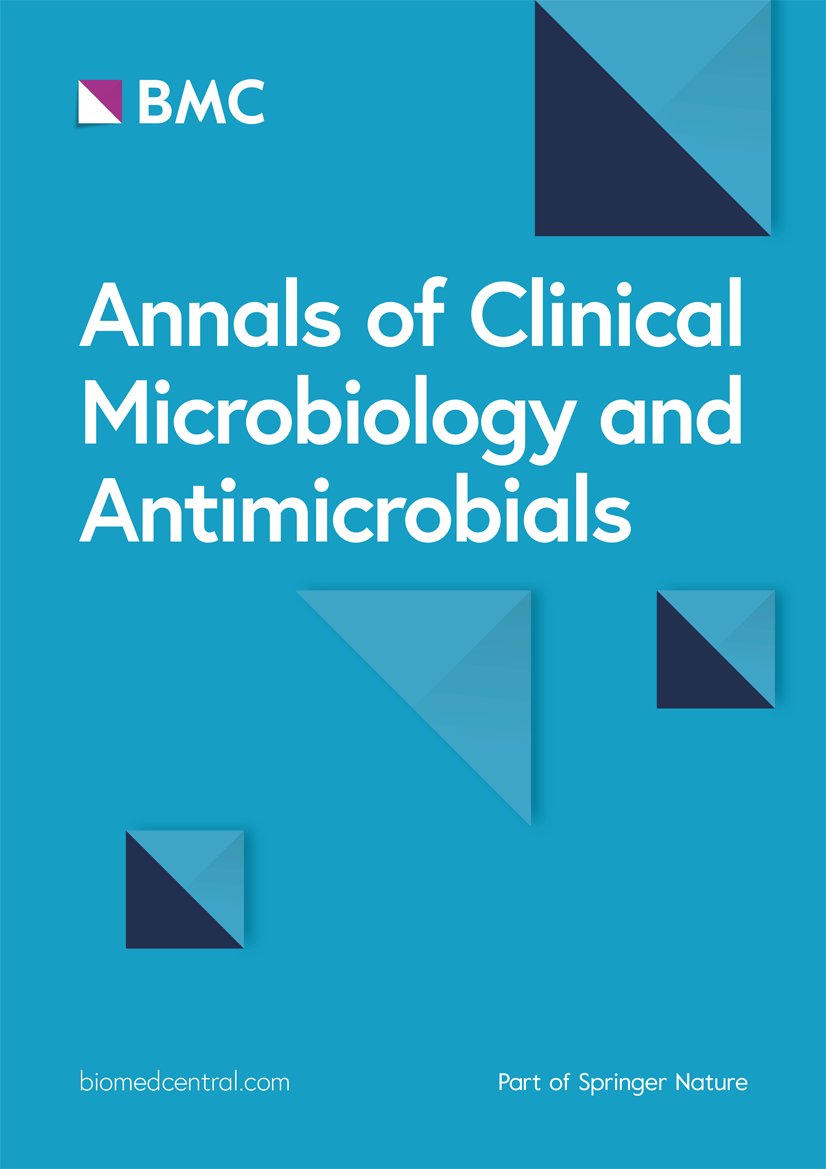Implementation of a PCR-based strategy to control an outbreak by Serratia marcescens in a Neonatal Intensive Care Unit
IF 4.6
2区 医学
Q1 MICROBIOLOGY
Annals of Clinical Microbiology and Antimicrobials
Pub Date : 2023-12-11
DOI:10.1186/s12941-023-00657-0
引用次数: 0
Abstract
To evaluate the clinical and epidemiological impact of a new molecular surveillance strategy based on qPCR to control an outbreak by Serratia marcescens in a Neonatal Intensive Care Unit (NICU). We design a specific qPCR for the detection of S. marcescens in rectal swabs of patients admitted to a NICU. We divided the surveillance study into two periods: (a) the pre-PCR, from the outbreak declaration to the qPCR introduction, and (b) the PCR period, from the introduction of the qPCR until the outbreak was solved. In all cases, S. marcescens isolates were recovered and their clonal relationship was analysed by PFGE. Control measures were implemented during the outbreak. Finally, the number of bloodstream infections (BSI) was investigated in order to evaluate the clinical impact of this molecular strategy. Nineteen patients colonized/infected by S. marcescens were detected in the pre-PCR period (October 2020–April 2021). On the contrary, after the PCR implementation, 16 new patients were detected. The PFGE revealed 24 different pulsotypes belonging to 7 different clonal groups, that were not overlapping at the same time. Regarding the clinical impact, 18 months after the qPCR implementation, no more outbreaks by S. marcescens have been declared in the NICU of our hospital, and only 1 episode of BSI has occurred, compared with 11 BSI episodes declared previously to the outbreak control. The implementation of this qPCR strategy has proved to be a useful tool to control the nosocomial spread of S. marcescens in the NICU.实施基于 PCR 的策略,控制新生儿重症监护室中肉豆蔻沙雷氏菌的爆发
目的:评估基于 qPCR 的新分子监测策略对控制新生儿重症监护室(NICU)中马氏沙雷氏菌爆发的临床和流行病学影响。我们设计了一种特殊的 qPCR,用于检测新生儿重症监护室住院患者直肠拭子中的 S. marcescens。我们将监测研究分为两个阶段:(a) PCR 前阶段,从宣布疫情到引入 qPCR;(b) PCR 阶段,从引入 qPCR 到疫情解决。在所有情况下,都回收了 S. marcescens 分离物,并通过 PFGE 分析了它们的克隆关系。疫情爆发期间采取了控制措施。最后,对血流感染(BSI)的数量进行了调查,以评估这种分子策略的临床影响。在 PCR 实施前(2020 年 10 月至 2021 年 4 月),有 19 名患者被 S. marcescens 定植/感染。相反,在 PCR 实施后,又发现了 16 名新患者。PFGE 发现了 24 种不同的脉冲型,分属 7 个不同的克隆组,这些克隆组在同一时间并不重叠。在临床影响方面,实施 qPCR 18 个月后,我院新生儿重症监护室未再发生 S. marcescens 感染疫情,仅发生了 1 例 BSI,而在疫情控制前曾发生过 11 例 BSI。事实证明,实施这种 qPCR 策略是控制 S. marcescens 在新生儿重症监护室内传播的有效工具。
本文章由计算机程序翻译,如有差异,请以英文原文为准。
求助全文
约1分钟内获得全文
求助全文
来源期刊

Annals of Clinical Microbiology and Antimicrobials
MICROBIOLOGY-
CiteScore
8.60
自引率
0.00%
发文量
49
审稿时长
>12 weeks
期刊介绍:
Annals of Clinical Microbiology and Antimicrobials considers good quality, novel and international research of more than regional relevance. Research must include epidemiological and/or clinical information about isolates, and the journal covers the clinical microbiology of bacteria, viruses and fungi, as well as antimicrobial treatment of infectious diseases.
Annals of Clinical Microbiology and Antimicrobials is an open access, peer-reviewed journal focusing on information concerning clinical microbiology, infectious diseases and antimicrobials. The management of infectious disease is dependent on correct diagnosis and appropriate antimicrobial treatment, and with this in mind, the journal aims to improve the communication between laboratory and clinical science in the field of clinical microbiology and antimicrobial treatment. Furthermore, the journal has no restrictions on space or access; this ensures that the journal can reach the widest possible audience.
 求助内容:
求助内容: 应助结果提醒方式:
应助结果提醒方式:


